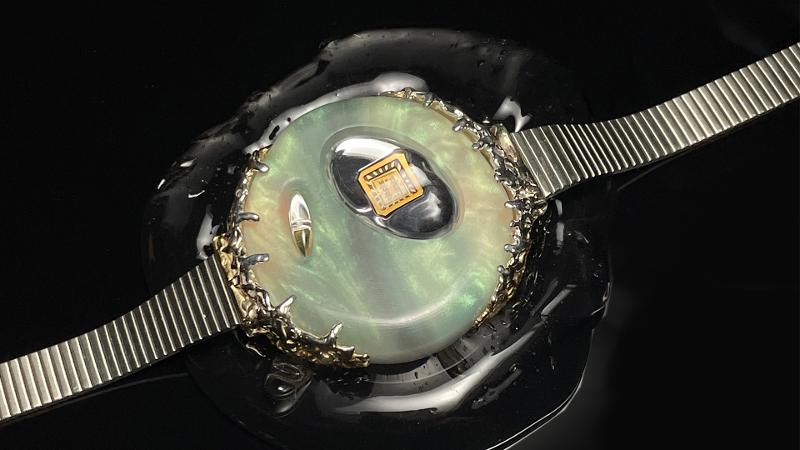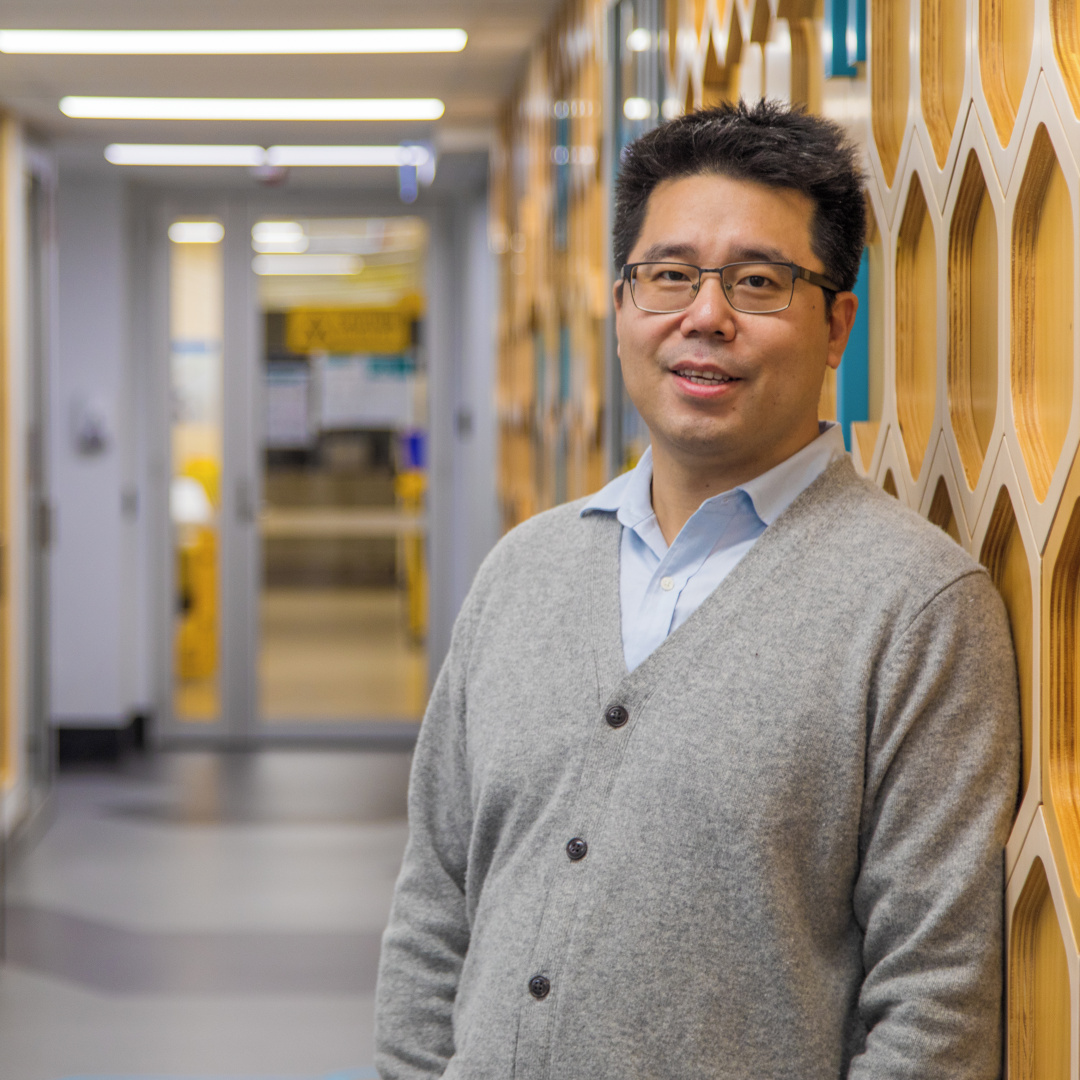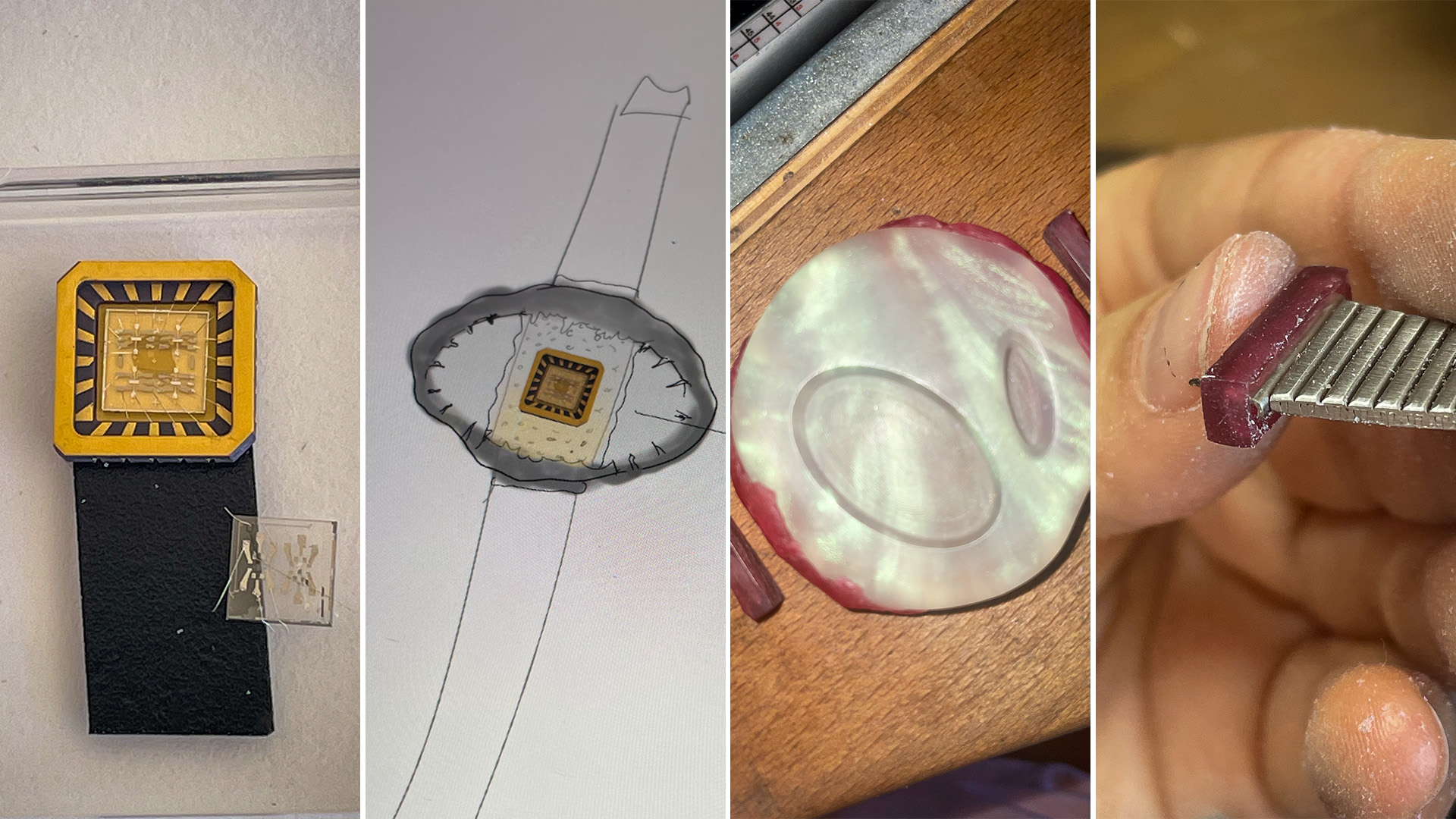
A QUT researcher has joined forces with an Australian jewellery designer to showcase the brilliance of diamond in medical, scientific, and other applications.
Diamond does not naturally conduct electricity, but Associate Professor Dongchen Qi from the QUT Centre of Material Science led research to make it both conductive and controllable as a high-capacity semiconductor.
Semiconductors conduct or insulate electrical signals as required and are used in devices, including transistors and circuits in electronic devices like mobile phones and computers.
In a collaborative research project including RMIT, Professor Qi’s team advanced their work to build a diamond-based transistor using a low-cost process to print a liquid gallium metal oxide layer onto the diamond surface.
“The oxide layer is indispensable in transistors, which are fundamental building blocks that allow computers and other logic devices to function,” said Professor Qi, who is also from the QUT School of Chemistry and Physics, and the Australian Research Centre of Excellence in Future Low-Energy Electronics Technologies.
“Normally you need very fancy equipment and high temperatures to form an oxide layer on diamond, but gallium is liquid at room temperature, which made it suitable to print.”

Professor Qi said diamond semiconductor technology was not ready yet but eventually researchers aimed to push it from the lab into everyday use in watches, computers, electric cars and smart chargers.
“Diamond is one of the most energy efficient third generation semiconductors and is suited to very high-power, high-frequency signal amplification and energy conversion unattainable by other semiconductor materials like silicon.
“It probably won’t replace silicon but could potentially work in harsh environments like space, for example, where the extreme temperatures and radiation are normally detrimental to silicon devices.
“We can potentially grow diamond from carbon waste using less energy and resources than needed for silicon production but growing it in large wafers is still an unsolved challenge.”
Professor Qi said communicating research beyond the scientific community was important and a key factor in his decision to loan independent Australian jewellery designer Danielle Karlikoff two diamond semiconductor devices from his earlier research.
Ms Karlikoff wanted to subvert the importance of diamond cut, colour and clarity in her concept collection and showcased the semiconductor in the Time is Forever watch as part of her ‘Second Life Diamonds’ collection, recently exhibited at Het Nieuwe Instituut (The New Institute) in Rotterdam.
“Concept jewellery is not designed to be wearable, but has a role in communicating possibilities through ideas, education, and the expansion of perceptions,” Ms Karlikoff said.
“I wanted people to question the real value of diamond beyond the manufactured desire for luxury, and highlight its alternative usefulness in medical, scientific, and other applications.”

The Second Life Diamonds collection included diamond and carbon-based research products from QUT, Australian National University (ANU), University of New South Wales (UNSW), and the University of Melbourne.
Ms Karlikoff received a grant from the Australia Council for the Arts to develop the concept pieces as a participant in the first GEMZ talent development programme initiated by Current Obsession — a magazine and platform for contemporary adornment.
Before heading to Rotterdam, she navigated COVID-19 lock-downs and border closures to meet with researchers, secure materials and develop the collection for the year-long accelerator, themed ‘The furthest from Earth we’ve ever been’.
Now based in Paris, Ms Karlikoff said she balances her work on custom wearable pieces like engagement rings for clients with her new experimental designs.
“I like the multidisciplinary approach to jewellery and the crossover between fashion, art, design, and science,” Ms Karlikoff said.
Media contacts
Novella Moncrieff, 61 7 3138 1150, novella.moncrieff@qut.edu.au
After hours, 0407 585 901, media@qut.edu.au


